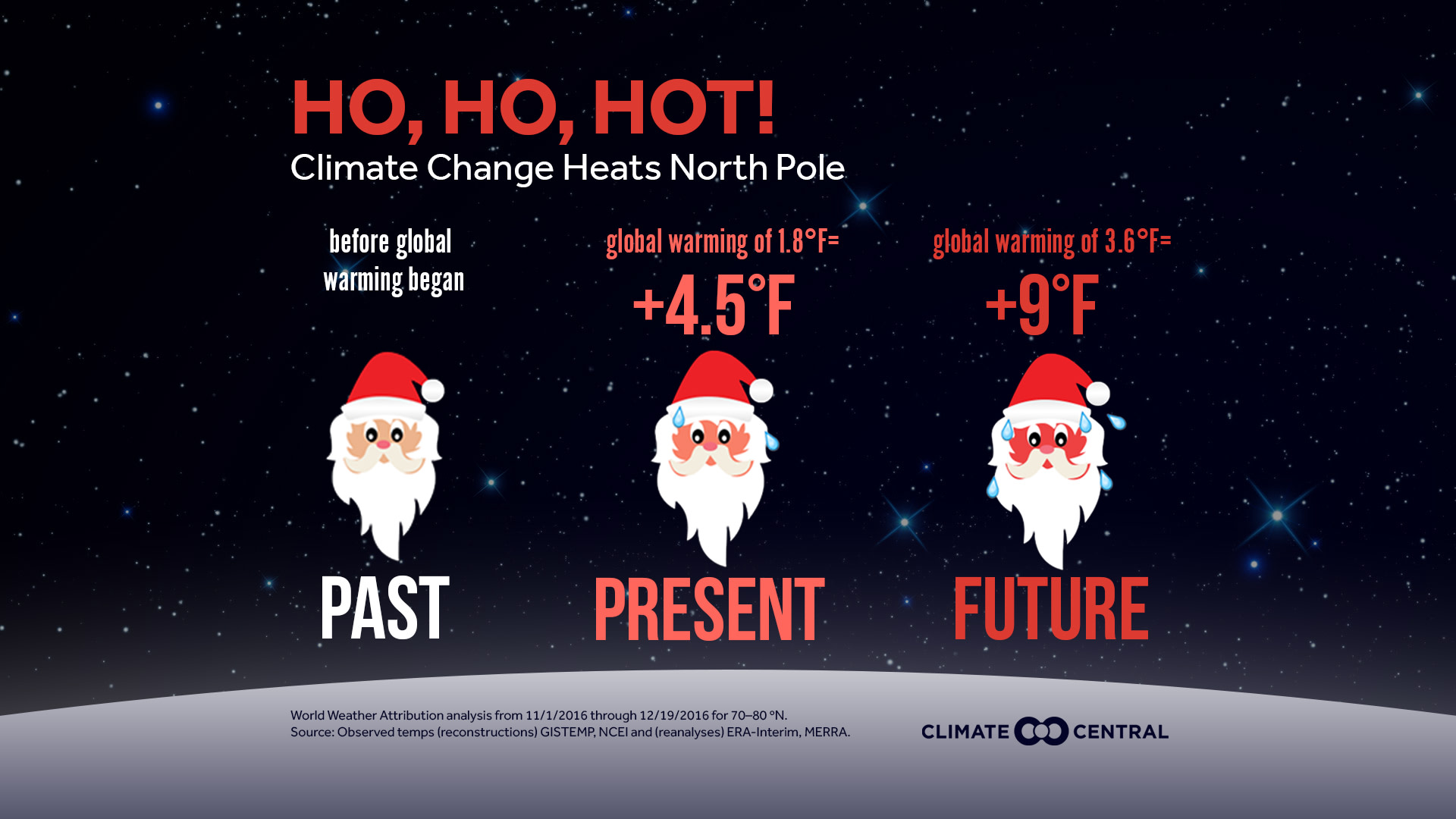Title: JPG • PNG
No Title: JPG • PNG
This year, the North Pole and the surrounding Arctic regions are seeing record high temperatures in November and December along with record low ice extent for the time of year. The monthly mean November temperature was 23°F (13°C) above normal at the Pole. Given the phenomenal warmth, the World Weather Attribution (WWA) team performed an analysis of average November-December temperature at the North Polar region to assess the influence of climate change.
Using a combination of observational analyses and climate modeling, the team found climate change is intensifying warmth during November and December at the North Pole, as the current warmth is unprecedented dating back to the early 20th century. Climate change is also making extended warm episodes more frequent during November and December at the North Pole. The current event would have had a less than 1 in 1000 chance of occurring in a typical year in the 1800s, but now has a roughly two percent chance of occurring every year. WWA researchers found that if nothing is done to slow climate change, by the time global warming reaches 3.6°F (2°C), events like this winter would become common at the North Pole, happening every few years. Read the full report on the WWA site.
